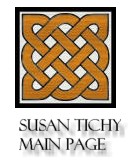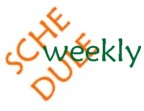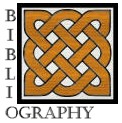ENG
LISH
660:
002
Modernist Women Poets:
Mina Loy, Marianne Moore, Lorine Niedecker
SPRING 2005 / SUSAN TICHY / THURSDAYS 7:20-10:00 / EAST BUILDING 134
Marianne
RGE
MAS
ON
UNI
VER
SITY
week 5: Feb 24: The Clear Idea: Later Poems
Many critics and readers consider Moore's “self-portrait” animal poems and others of the 1930s her most accomplished and satisfying work. Others consider these clearer and more unified poems a retreat from the high daring of her earlier poems. For this week’s discussion, each of you should develop a position on this question of change or decline: What has changed in the 1930s poems? Are they a “triumph,” a “retreat,” or merely a change? If a triumph, a triumph of what? If a retreat, a retreat from what? In the recommended readings for this week you will find Jeanne Heuving’s argument that as early as 1932 Moore was abandoning the very techniques that made it possible for her to write “universal” poetry that also inscribed her experience as a woman, and John Slatin’s argument that the later, more explicit poems result from personal and historical changes that diminished Moore’s faith in her readers and community. Be warned that there is more new reading than rereading in this week's lot.
REQUIRED READING & REREADING:
Poems of Marianne Moore:
Some poems are listed here only because Hueving or Slatin make an argument about them. Those marked (*) are the “major” poems of the 1930s, plus a few later ones.
The Dial Years: England 141, Peter 177
Lyrics & Sequences: *The Steeple-Jack 183, *The Student 185, *The Hero 187, *The Jerboa 190, *The Plumet Basilisk 196, *No Swan So Fine 189, *The Frigate Pelican 204, *Virginia Britannia 212, *Bird-Witted 217, *The Pangolin 224,
World War II & After, 1940-1956: Four Quartz Crystal Clocks 235, What Are Years 237, *The Paper Nautilus 238, Rigorists 240, *He Digesteth Hard Yron 243, Spenser's Ireland 245, *In Distrust of Merits 250, *Nevertheless 253, Elephants 255, The Mind Is An Enchanting Thing 258, A Carriage from Sweden 260, His Shield 264, Propriety 265, Armor's Undermining Modesty 274
The Magic Flute, 1956-1965: O to Be a Dragon 299, Blessed Is the Man 294, In the Public Garden 303, The Arctic Ox 305, Tell Me Tell Me 319
On Line Reading:
Instructor’s Notes: Quotes from Moore's prose
Reading at the JC Reserve Desk:
Marianne Moore: Complete Prose: Feeling and Precision, p 396, essay on poetic form; “Durer’s Rhinoceros...” p 203; Henry James as a Characteristic American, p 316; Poem-like page on circus, p 220; Poem-like paragraph “We are told...”, p 174; Poem-like portrait of Dame Ellen Terry, p 208; “When an artist is willing...” on advertising as a kind of poetry, & a metonymic sensibility, p 214.
RECOMMENDED READING:
At the JC Reserve Desk:
Jeanne Hueving: “Overstatement: The Later Poems and a Diminished Vision.” In her Omissions Are Not Accidents: Gender and Authority in Marianne Moore.
John Slatin, “Advancing Backward in a Circle,” in his The Savage's Romance: The Poems of Marianne Moore.




